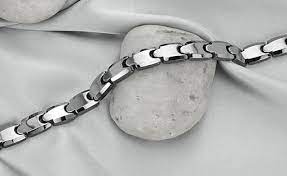
How To Start A Jewelry Line With No Experience: The Ultimate Guide
- Roger
- 0
- on Nov 30, 2022
How To Start A Jewelry Line With No Experience: The Ultimate Guide
If you’ve ever dreamed of starting your own jewelry line but feel like you lack the experience, never fear! This guide will show you how to start a jewelry line with no experience. With a little hard work and creativity, anyone can start their own successful jewelry business.
The first step is to research the industry and find out what it takes to be a successful jeweler. There are many online resources and books available on the subject. Once you have a good understanding of the basics, you can begin to develop your own unique style and design ideas.
Next, you’ll need to create some samples of your work. These can be made from inexpensive materials such as clay or beads, or if you’re feeling more ambitious, you can invest in some quality metals and stones. It’s important to create a few different styles so that potential customers can see the variety of jewelry you’re capable of making.
Then, it’s time to start marketing your new jewelry line! Create a website or online shop where people can browse and purchase your pieces. You can also sell your jewelry at local craft fairs or through consignment shops. And don’t forget the power of social media – post photos of your latest creations on Instagram and Facebook to build up interest in your work.
With dedication and determination, anyone can start their own jewelry line with no experience. Just remember to do your research, create beautiful pieces, and market yourself effectively – then watch as your dream becomes
how to clean tarnish jewelry
If your jewelry is looking a little worse for wear, it may be time to give it a good cleaning. But before you start scrubbing away, it’s important to know how to clean tarnish jewelry the right way.
To get started, you’ll need a few supplies:
-A bowl of warm water
-A mild dish soap
-A soft toothbrush or cloth
-A jewelry cleaning solution (optional)
First, mix together the warm water and dish soap in the bowl. Submerge your piece of jewelry in the soapy water and let it soak for a few minutes. This will help loosen any dirt or grime that’s build up on the surface.
Next, take your toothbrush or cloth and gently scrub the jewelry. Be sure to pay special attention to any crevices or areas where dirt may be hiding. If you’re using a jewelry cleaning solution, follow the instructions on the bottle.
Once you’re finished scrubbing, rinse the jewelry off in warm water. Pat it dry with a soft cloth and admire your sparkling clean jewelry!
What is tarnish?
Tarnish is a thin layer of corrosion that forms on the surface of metals. It is caused by exposure to oxygen and moisture in the air. Tarnish does not necessarily indicate that the metal is ruined, but it can make it more difficult to work with. Tarnished metal may be cleaned with a number of methods, including polishing, chemical cleaners, or electrolytic cleaning.
Tarnish is a natural process that happens to all metals over time.
Tarnish is a natural process that happens to all metals over time. The rate at which tarnish occurs depends on the metal, but all metals will eventually succumb to it. Tarnish is caused by a chemical reaction between the metal and its environment, typically involving oxygen and water.

While some people might think of tarnish as simply unsightly, it can actually be quite damaging to the metal. Tarnish causes the metal to become weaker and more brittle, making it more susceptible to breakage. It can also cause corrosion, which can lead to even more serious damage.
Fortunately, there are ways to prevent or slow down tarnishing. Keeping metals clean and dry is a good start, as this minimizes their exposure to the elements that cause tarnish. Specialty cleaners and polishes designed for specific metals can also be used to help keep them looking their best. With proper care, even heavily tarnished metals can be restored to their original luster.
Tarnish is caused by a reaction between the metal and the air.
When metal is exposed to air, it reacts with the oxygen and moisture in the air to form a thin layer of oxide on the surface of the metal. This process is called oxidation.
Oxidation is a natural process that happens to all metals over time. However, some metals are more resistant to oxidation than others. For example, gold and silver do not tarnish as easily as copper or iron.
Tarnish can also be caused by chemicals in the environment, such as sulfides in the air or water.
Tarnish can be removed with regular cleaning.
Tarnish is a thin layer of corrosion that forms on the surface of metals. The most common form of tarnish is oxide, which forms when metal is exposed to oxygen in the air. Tarnish can also be caused by other chemicals in the environment, such as sulfides or chlorides. While tarnish does not necessarily damage the metal beneath it, it can be unsightly and difficult to remove.
There are several ways to remove tarnish from metals. The most common method is simply to clean the surface with soap and water. This will usually remove any light layers of tarnish. For more stubborn tarnish, you may need to use a commercial cleaning product specifically designed for removing tarnish. There are also a number of home remedies that can be used, such as vinegar or lemon juice. Whichever method you choose, be sure to rinse the metal thoroughly afterwards to remove any residual cleaner that could damage the finish.
Jewelry should be cleaned with a soft cloth and a mild soap.
To clean gold jewelry, mix a solution of 1/4 cup warm water and 1 tablespoon dishwashing liquid. Soak the jewelry for about 20 minutes, then brush it gently with a soft toothbrush. Rinse the jewelry in warm water and dry it with a soft cloth. To clean silver jewelry, mix a solution of 1/2 cup warm water and 2 tablespoons baking soda. Soak the jewelry for about 30 minutes, then brush it gently with a soft toothbrush. Rinse the jewelry in warm water and dry it with a soft cloth.
Rinse jewelry thoroughly after cleaning to remove any soap residue.
To avoid potential damage to your jewelry, be sure to rinse it thoroughly after cleaning to remove any soap residue. By taking this extra step, you can help keep your jewelry looking its best for many years to come.
Dry jewelry completely before storing it away.
Water can cause jewelry to rust, tarnish, and discolor.
So be sure to dry your jewelry off completely before storing it away in a box, pouch, or other container.
You can use a soft cloth to pat your jewelry dry, or if you’re in a hurry, you can let it air dry.
how to display jewelry at a garage sale
If you’re looking to start a jewelry line with no experience, one of the best ways to get started is by holding a garage sale. This is a great way to get rid of any unwanted jewelry and make some quick cash. Plus, it’s a great way to test out your designs and see what people are willing to pay for them.
To hold a successful garage sale, you’ll need to do a bit of planning and preparation. First, you’ll need to gather up all of the jewelry you want to sell. This includes any old pieces you no longer wear, as well as any new pieces you’ve created. Once you have everything gathered, it’s time to start pricing everything.
Be sure to price your jewelry reasonably, as people at garage sales are looking for bargains. However, don’t undersell yourself either – remember that this is an opportunity to make some money and get your name out there. Once you’ve got everything priced, it’s time to start setting up your display.
Your display is important, as it will be the first thing potential customers see when they come to your sale. Take some time to create an attractive and organized display that will showcase your jewelry in the best light possible. Remember to include signage that clearly indicates prices and other important information.
With a little bit of planning and effort, you can hold a successful garage sale that will help you jumpstart your new jewelry line.